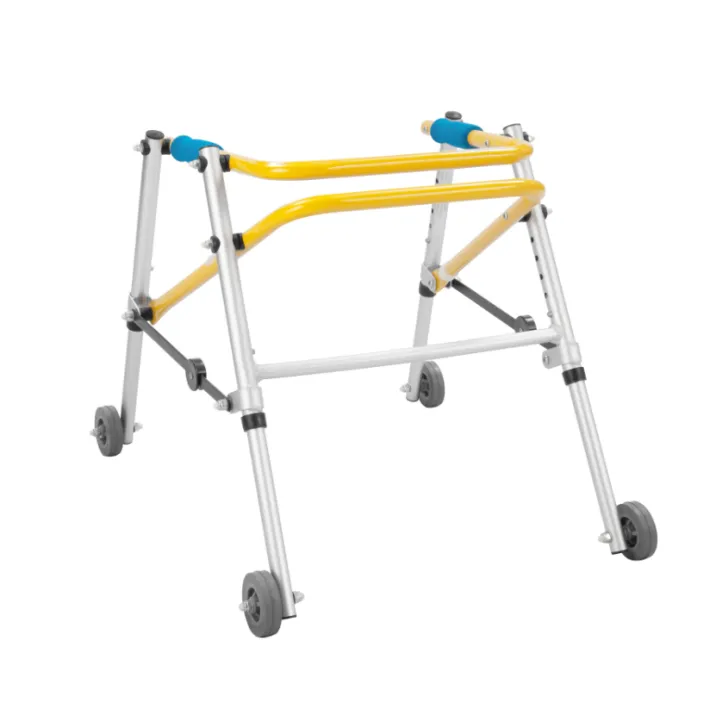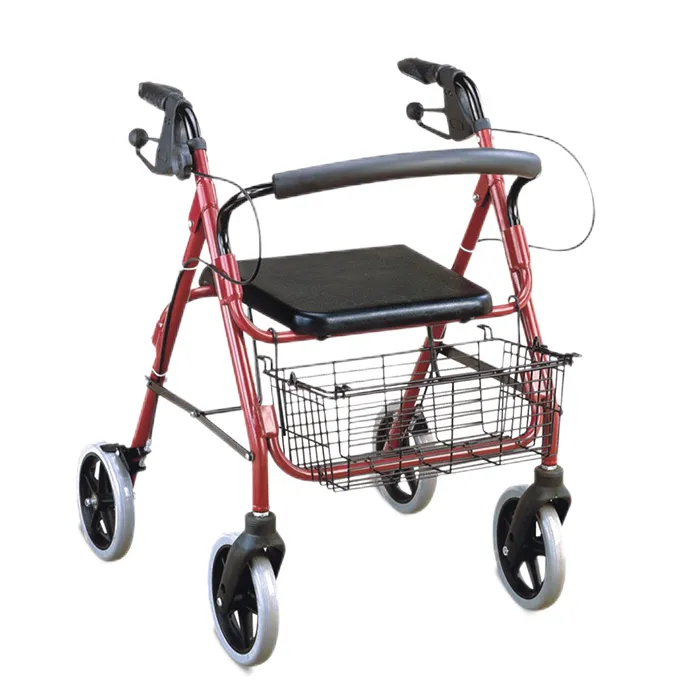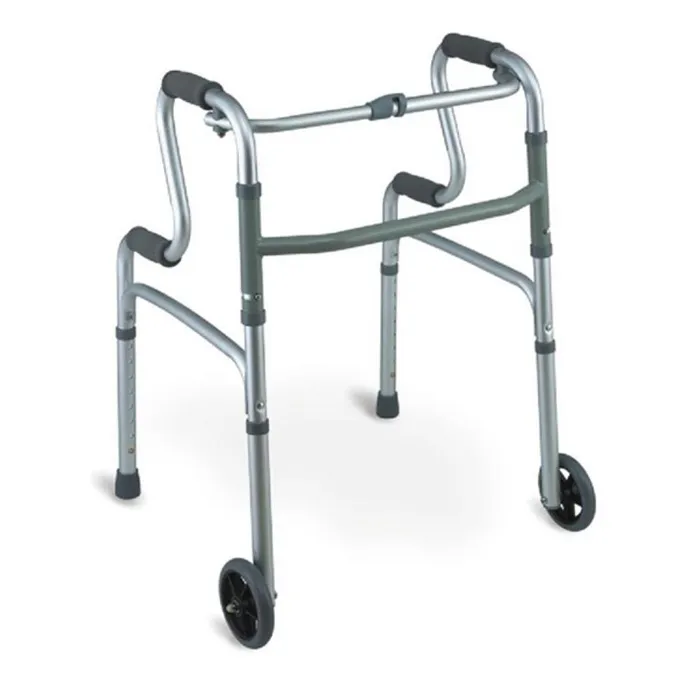In order to maintain independence and reduce the risk of falling, the use of assisted walking devices has become extremely common. In recent years, in particular, the application of rollator with wheels in the elderly has gradually expanded and has become a common daily travel aid.
But at the same time, a key question has been widely discussed: "Is rollator with wheels safe for the elderly?" This question involves both the professionalism of product design and the degree of matching between the physical condition of the elderly and the use environment.
This article will focus on this topic and systematically analyze whether rollator walker with wheels is really suitable for the elderly from the aspects of structural characteristics, safety design basis, physical conditions of the applicable population, potential safety hazards, clinical adaptation standards, and international technical specifications of rollator with wheels, and clarify under what conditions its safety can be guaranteed.

What is rollator with wheels?
Rollator with wheels is a wheeled walking aid, usually used to support individuals with reduced walking ability or unstable gait. Unlike traditional walkers, rollator with wheels are equipped with 2 to 4 wheels at the bottom for easy pushing and moving. Its design goal is to reduce the burden on the lower limbs, improve walking stability, and increase the range of motion.
The main types include:
• Two-wheeled rollator (front wheel and rear wheel are wheelless or with anti-skid pad);
• Three-wheeled rollator (three-point support design, suitable for narrower spaces);
• Four-wheeled rollator (with additional structures such as handbrake, seat, storage basket, etc.);
• Lightweight rollator with wheels (usually made of aluminum alloy, foldable);
• Medical rehabilitation rollator (used for postoperative rehabilitation or chronic disease support).
Rollator with wheels emphasizes "rolling assistance" rather than "lifting by lifting", so it is more suitable for elderly people who have a certain degree of independent walking ability but need support and stability.

What are the key factors affecting the safety of rollator with wheels for the elderly?
1. Support stability
The core function of rollator with wheels is to provide a support structure when walking. The bottom wheel design allows users to push the device forward without lifting it.
Compared with traditional walkers, rollator walker with wheels has higher smoothness and less physical exertion on flat ground, but it also introduces new safety risks - in special environments such as ramps, carpets, slippery surfaces, etc., the sliding of wheels may increase the difficulty of control and cause the possibility of tilting or slipping.
Therefore, from the perspective of support, the anti-dumping structure and brake system of rollator walker with wheels need to be strengthened in the design to compensate for the stability challenges brought by wheel movement.
2. Brake and control system
Most four-wheel rollator with wheels are equipped with manual brake systems. Whether the elderly can easily control the brakes and whether the hand strength is sufficient are the key factors affecting their safe use.
• Excessive handbrake sensitivity can cause sudden stops and increase the risk of falling;
• Failure or looseness of the brake system will cause rapid sliding when going downhill, which is very likely to cause falls.
A qualified rollator walker with wheels should have double-sided brakes, emergency locking system, smooth sliding wheel set and anti-reverse sliding mechanism to ensure that users can control and stabilize.
3. Seat and center of gravity design
Some rollators with wheels provide built-in seats, allowing the elderly to rest at any time while walking. However, if the seat structure is not designed properly, it may cause problems such as center of gravity offset and structural asymmetry.
A safe rollator with wheels should have:
• Symmetrical layout of the central axis;
• The center of gravity is not affected after folding and storage;
• The user will not lean forward or backward when sitting;
• The distance between the backrest and the handle is matched to ensure an upright sitting posture.
4. Material and weight
Lightweight aluminum alloy rollators are widely used because they are easy to carry, but their light weight may cause them to fall over in the wind or become unstable laterally. On the contrary, although the steel structure is more stable, it also requires higher strength.
The weight of the rollator with wheels used by the elderly should be controlled between 6-10 kg, and it should be equipped with anti-slip handles and height adjustment functions to improve the overall control safety.

Applicable physical conditions for the elderly to use rollers with wheels
1. Gait ability requirements
Roller with wheels is suitable for the following elderly groups:
• Good walking ability but easy fatigue;
• Insufficient lower limb stability during postoperative rehabilitation;
• Degenerative knee lesions leading to slow walking;
• Mild balance disorder but intact cognition.
Not suitable for:
• Individuals who have completely lost the ability to walk;
• Those with severe cognitive impairment (such as severe dementia);
• Individuals who cannot understand braking or control methods;
• Those with severe hemiplegia of limbs, affecting the control ability on one side.
Therefore, although the roller with wheels has a stable auxiliary function, it is not a tool to "replace walking" but a "supplementary support".
Safety definition of rollator with wheels by international and domestic standards
ISO international standard
ISO 11199-2:2005 is the core technical standard for walkers, which stipulates that rollator walker with wheels must meet the following requirements:
• Static load ≥120 kg;
• The brake system must control both wheels to stop at the same time on one side;
• The whole machine must pass the rollover test, vibration test, and dynamic brake test;
• The height, width, and center of gravity must be adjustable to accommodate individual differences.
Related Chinese standards (YY/T)
According to "YY/T 1423-2016 Technical Requirements for Walkers", rollator with wheels must meet the following requirements:
• The rolling resistance should be moderate and should not slide too fast;
• The brake system must have an emergency locking device;
• The height of use should be adjustable within the range of 76–95 cm;
• The caster diameter should be no less than 12 cm to ensure obstacle crossing capability;
• Information such as the product load limit and user weight adaptation range must be posted.
These standards provide a basic safety guarantee system for the elderly to use rollers with wheels, and force manufacturers to design and manufacture products according to scientific and technological parameters.
Safety performance of rollers with wheels in daily life scenarios
The safety of rollers with wheels depends not only on the device itself, but also on the environmental adaptability.
In indoor environments:
• Good performance, the wheels can move smoothly;
• Flexible steering control, easy to bypass furniture;
• Pay attention to resistance changes on carpets, thresholds, etc.
In outdoor environments:
• Uneven roads or steep slopes may bring the risk of sliding;
• Slippery surfaces and gravel areas on rainy days reduce the friction coefficient of the wheel set;
• The stability of four-wheeled walkers is better than that of two-wheeled or three-wheeled structures.
In general, rollers with wheels are safer in flat, barrier-free environments, but they need to be carefully evaluated and used in complex or changing terrains.

The positive effect of rollator with wheels on improving the independence of the elderly
In addition to the hard indicators of safety, rollator with wheels also promotes the health and quality of life of the elderly in the following aspects:
• Reduce the risk of falling;
• Enhance self-confidence and self-care ability;
• Extend the time of outdoor activities;
• Support postoperative rehabilitation and chronic disease exercise management;
• Reduce dependence on family caregivers.
These positive effects have irreplaceable value in long-term care management. Therefore, under the premise of ensuring safety, rollator with wheels has made a significant contribution to improving the independence of the elderly.
Scientific selection and correct use determine whether rollator with wheels is safe
A systematic analysis of the question "Is rollator walker with wheels safe for the elderly?" shows that:
1. Rollator with wheels itself is a well-structured and standard-verified auxiliary device;
2. It has good adaptability for the elderly with walking ability and intact cognitive function;
3. Under the premise of reasonable structural design and correct use, the safety of rollator walker with wheels is reliable;
4. What really determines whether it is safe is not just the product parameters, but whether the user's physical condition matches the use environment.
Therefore, the answer is: Rollator with wheels is safe for the elderly, but only if it is scientifically selected and used reasonably.
Is It Possible to Customize Hospital Furniture Designs?
Absolutely. We offer OEM & ODM customization services to help meet your specific needs. From bed dimensions to branding options, Yikang Medical ensures the product suits your market. Our experienced R&D and production teams deliver quality you can trust. Send us your designs or ideas and we’ll provide solutions.

